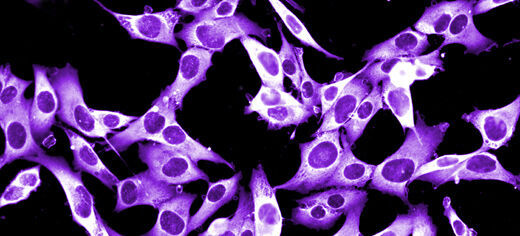
Researchers from the University of Leeds have discovered that mutations in a specific gene are responsible for a hereditary form of melanoma.
Every year in the UK, almost 12,000 people are diagnosed with melanoma, a form of skin cancer. About 1 in 20 people with melanoma have a strong family history of the disease. In these patients, pinpointing the genetic mutations that drive disease development allows dermatologists to identify people who should be part of melanoma surveillance programmes.
The team, working with colleagues from the Wellcome Trust Sanger Institute in Cambridge, found that people with specific mutations in the POT1 gene, that protects the ends of our chromosomes from damage, were extremely likely to develop melanoma. These mutations deactivate the POT1 gene.
Professor Tim Bishop, of the School of Medicine at the University of Leeds, a senior co-author, said: “This finding significantly increases our understanding of why some families have a high incidence of melanoma.
“Since this gene has previously been identified as a target for the development of new drugs, in the future, it may be possible that early detection will facilitate better management of this disease.”
Dr David Adams, co-senior author from the Wellcome Trust Sanger Institute, added: “Genomics is on the verge of transforming the healthcare system – this study highlights the potential clinical benefits that can be gained through genomic studies and offers potential strategies to improve patient care and disease management.
“With this discovery we should be able to determine who in a family is at risk, and in turn, who should be regularly screened for early detection.”
Known genetic mutations account for approximately 40% of all occurrences of inherited forms of melanoma. The team set out to identify the hereditary mutations that account for the other 60% by sequencing part of the genome of 184 patients with hereditary melanoma caused by unknown mutations.
They found that the inactivation of POT1 caused by these mutations leads to longer and potentially unprotected telomeres, regions at the end of our chromosomes that protect chromosomes from damage.
The team, funded by Cancer Research UK and the Wellcome Trust Sanger Institute, also found that there were also cases of other cancer types in families with these hereditary mutations such as leukaemias and brain tumours. It seems that mutations that deactivate the POT1 gene may underlie other cancers, not just melanoma.
“Our research is making a real difference to understanding what causes melanoma and ultimately therefore how to prevent and treat melanoma and is a prime example of how genomics can transform public health,” said Professor Julia Newton Bishop, co-senior author from the University of Leeds. “This study would not have been possible without the help and patience from the families that suffer from these devastating, inherited forms of melanoma.”
Further information
Professor Tim Bishop is available for interview. Contact Ben Jones, Press Officer, University of Leeds, on 0113 343 8059 or email B.P.Jones@leeds.ac.uk
The paper: “POT1 loss-of-function variants predispose to familial melanoma” by Robles-Espinoza et al is available http://www.nature.com/ng/journal/vaop/ncurrent/pdf/ng.2947.pdf.